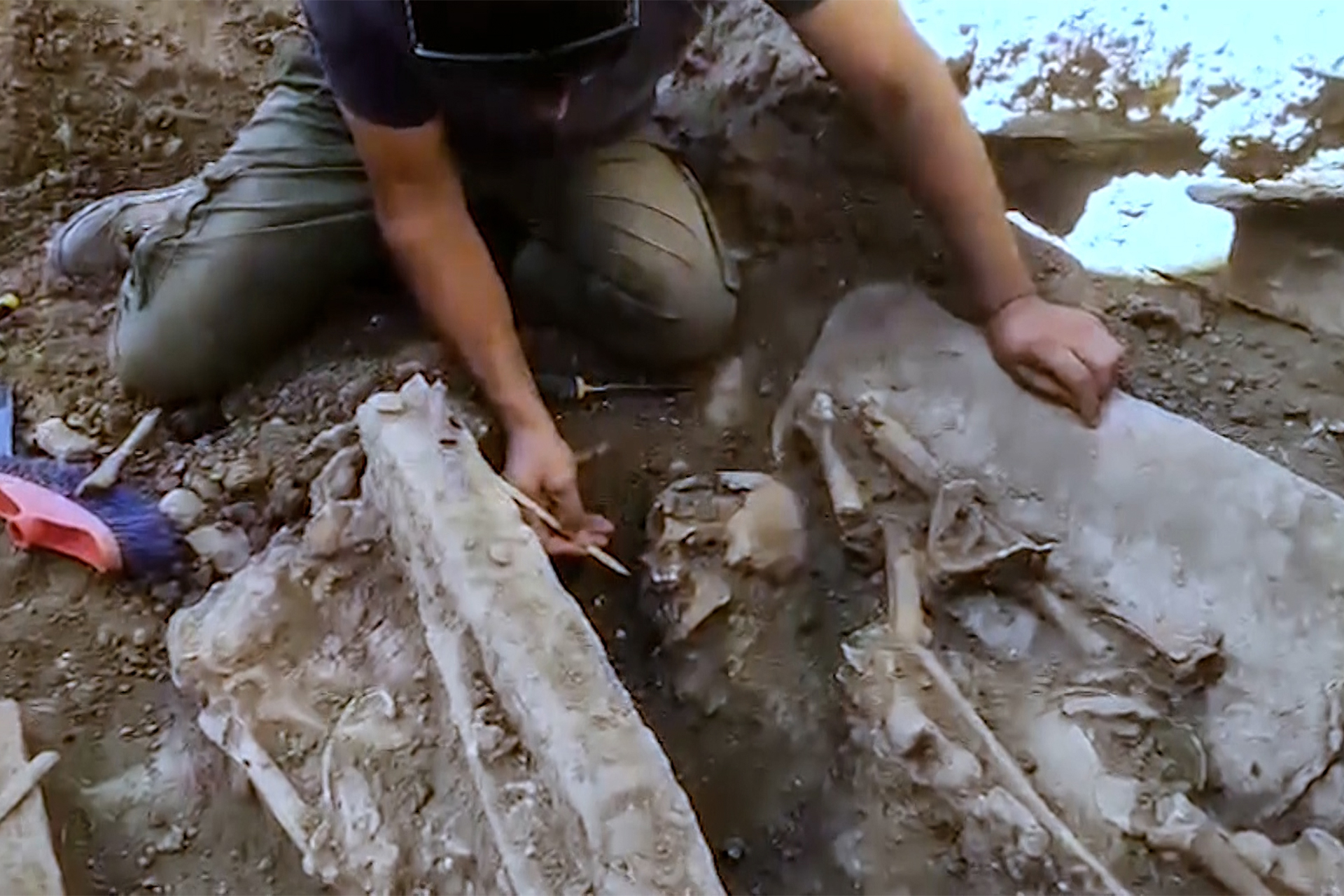The tomb of Sahel bin Malik in the city of Granada in southern Spain, with its many archaeological evidence, chronicles an important period in the history of Muslims in Andalusia, when the city was the last refuge for thousands of them before its fall in 1492.
Archaeological and historical studies indicate that the tomb was the largest cemetery for Muslims in Europe at that era, says archaeologist Amjad Suleiman, head of the team that discovered the tomb.
Discover the cemetery
The tomb of Sahel bin Malik was discovered in the center of Granada, and excavations began there on October 18, 2021, on an area of 1,000 square metres.
The surprise that unfolded over the course of nearly a year was the discovery of 5 mass graves containing the remains of about 600 men and women of different ages.
Archaeologist Amjad Suleiman states that some Muslims in that period hid their identities in order to avoid forcing them to convert to Christianity, so they put a card next to the shroud of those who died to indicate it, and the exploration team found pieces of those cards.
This cemetery is distinguished from the rest of the Andalusian cemeteries previously known by the presence of layers of burials.
Given that Granada was the last Muslim city to fall in Andalusia, the overcrowding in it, the siege and epidemics are factors that explain the large number of remains that were found.
The head of the Foundation of the Great Mosque of Granada, Omar del Pozo, pointed out the importance of this discovery in particular, given the location of the cemetery in the city center, after previous excavations revealed the remains of many Muslims in different places in Granada.
The team of scientists and researchers that carried out the excavations discovered that during the period following the closure of the cemetery of Sahel bin Malik after the Muslims were forced to convert to Christianity, parts of the cemetery and its stones were taken for the construction of neighboring buildings, including the San Jerónimo monastery near the cemetery site.
Cemetery name and date
The cemetery was named after the Andalusian writer and jurist Sahel bin Malik Al-Azdi, who died in 639 AH / 1241 AD, but it may also have been known as the cemetery of “Ibn Sahel bin Malik”, as stated in the book “The Kingdom of Granada in the Era of Bani Ziri Berbers” by Dr. Maryam Qasim Tawil, issued year 1994.
The cemetery was distinguished by the presence of layers of burials (Al-Jazeera)
Lisan Al-Din Bin Al-Khatib mentioned in his book “Al-Ihatah fi Akhbar Granada” a brief reference to “a famous cemetery of Ibn Sahel bin Malik” and talked about its location near Bab El-Bireh.
The full lineage of the man may explain this discrepancy in the name, as it came in many sources: Sahel bin Muhammad bin Sahel bin Malik bin Ahmed bin Ibrahim bin Malik Al-Azdi Al-Ghannati, and his nickname is Abu Al-Hassan.
Biography of Sahel bin Malik
Ibn Abd al-Malik al-Marrakchi translated for him in his book “Al-Tayl wa Al-Takmilah for my Kitab Al-Mawsul and Al-Silah” and said, “He was one of the notables of his Egypt, and the best of the people of his time. ".
He also described him as "perfect in Arabic, abundant in jurisprudence and its origins, a writer, glorified in the grammar of speech and humor, witty in humour, and well-spoken."
Ibn Abd al-Malik stated that Aba al-Hassan “compiled a useful book in Arabic, arranged speech in it on the chapters of Sibawayh’s book, and it has useful comments on the seeker in the principles of jurisprudence (by al-Ghazali), and other benefits.” his money.
Al-Hafiz Shams Al-Din Al-Dhahabi also translated for him in his book “Sir Al-Alam Al-Nabila”, and he quoted Ibn Al-Abbar’s saying that he “was one of the most eloquent scholars and imams, orators with sophistication.”
Lisan Al-Din bin Al-Khatib also quoted the saying of Abu Jaafar bin Masada in praising him, and he said, "He was the head of the jurists and the orator of the eloquent orators, and the finale of the men of Andalusia."

